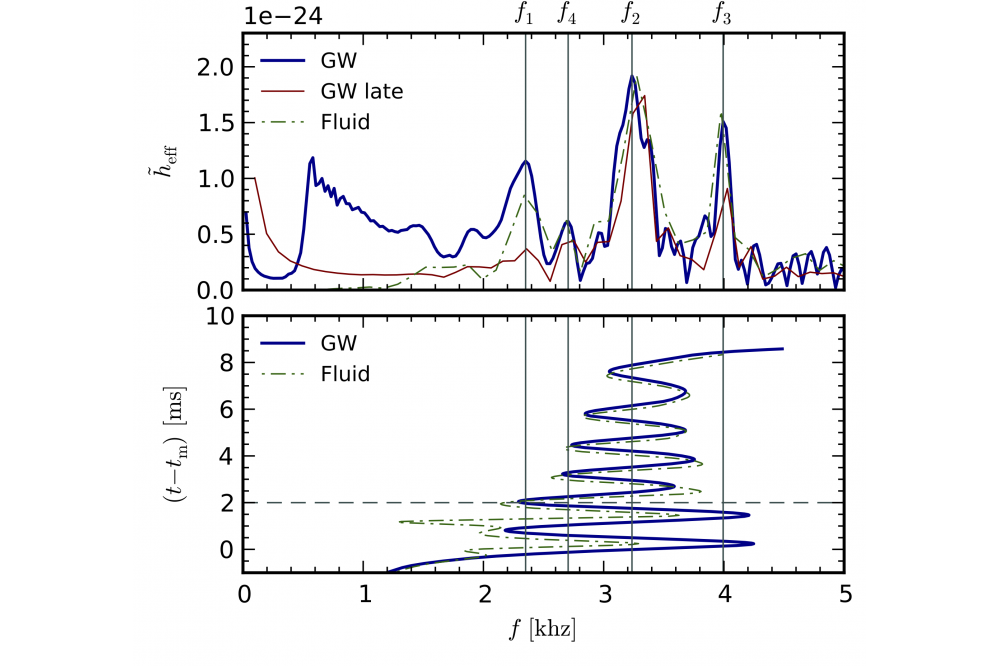On the Properties of Hypermassive Neutron Stars Formed in Mergers of Spinning Binaries
Introduction
Binary neutron star (BNS) mergers are among the most promising sources of gravitational waves (GW). In this project, we performed three dimensional, fully relativistic numerical simulations of coalescing binary neutron star systems with different spins and two different nuclear equations of state (EOS).
Methods
The outcome of BNS mergers is mainly determined by the masses and spins of the two neutron stars (NS), and by the behaviour of matter at high densities, as described by EOS. If the mass is above some threshold, the two stars promptly collapse to a black hole (BH) upon merger. Below the threshold, they form a metastable or even stable NS. The threshold depends strongly on the EOS and on the spin. The case where a hypermassive neutron (HMNS) star is formed is particularly interesting since it emits a strong GW signal which carries information about the EOS. By varying the spin we determined its influence on the GW signal and the rotation profile of the HMNS. Figure 1 displays a snapshot of the density profile showing an HMNS formed during the merger. In the GW signal (see Figure 2) we can observe a modulation during the HMNS stage induced by strong quasi-radial oscillation. Figure 3 shows an example for the time-dependent GW frequency spectrum, from the increasing orbital frequency during the inspiral, over the rich spectrum of the HMNS stage, to the formation of a BH.







